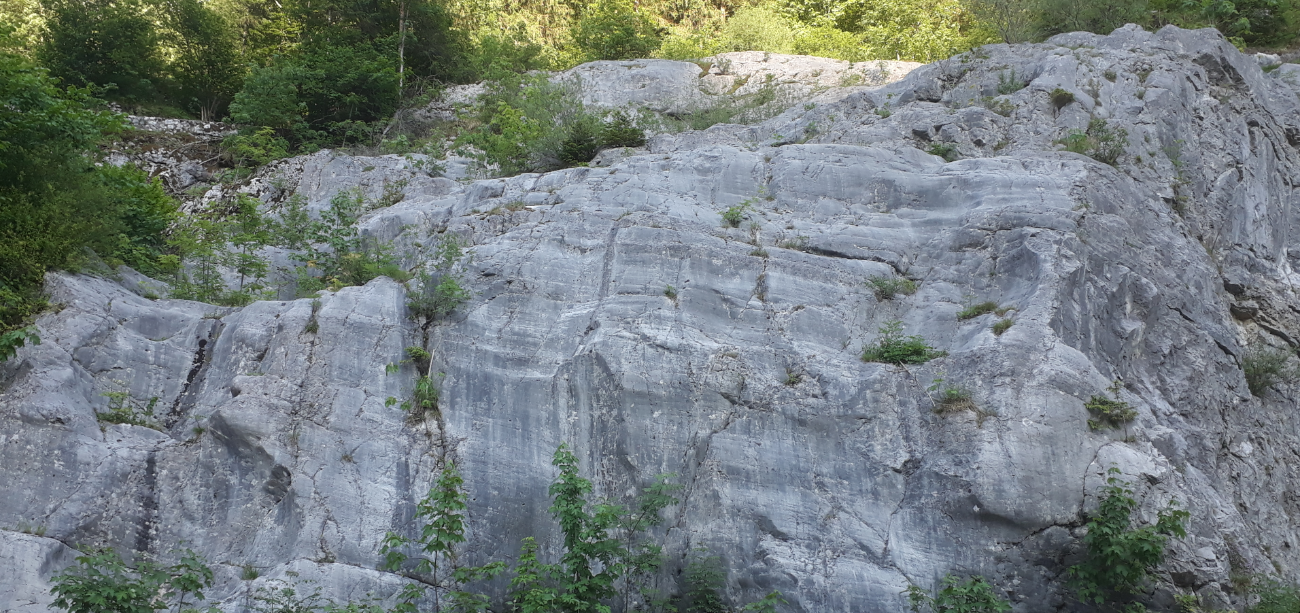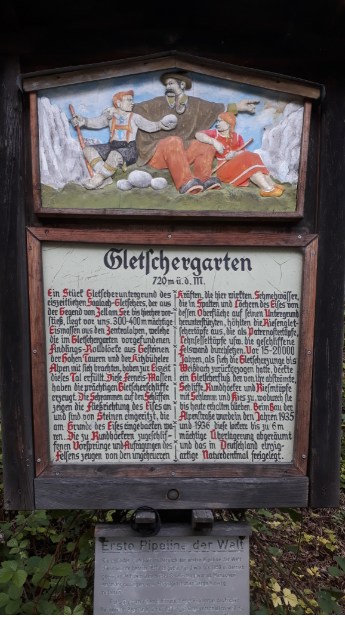Edith Ebers on:
[Wikipedia]
[Google]
[Amazon]
Edith Ebers (4 December 1894–13 September 1974), née Heirich, was a German Quaternary geologist and conservationist. She became widely known for personally stopping the 1935 detonation of rocky outcroppings that blocked a new Alpine road between the Bavarian towns of
 Edith Heirich was born in 1894 in
Edith Heirich was born in 1894 in
 During blasting operations for the construction of the German Alpine Road in 1936 between
During blasting operations for the construction of the German Alpine Road in 1936 between
Traunstein
Traunstein (; ) is a Town#Germany, town in the south-eastern part of Bavaria, Germany, and is the administrative center of a much larger Traunstein (district), district of the same name. The town serves as a local government, retail, health se ...
and Bad Reichenhall
Bad Reichenhall (; Central Bavarian: ''Reichahoi'') is a spa town, and administrative center of the Berchtesgadener Land district in Upper Bavaria, Germany. It is located near Salzburg in a basin encircled by the Chiemgau Alps (including Mount Stau ...
. The detonations would have destroyed the exposed rocks that exhibited glacial striations. Thereafter, she became known as the Glacier Fräulein (in English: Glacier Maiden).
Biography
Nuremberg
Nuremberg (, ; ; in the local East Franconian dialect: ''Nämberch'' ) is the Franconia#Towns and cities, largest city in Franconia, the List of cities in Bavaria by population, second-largest city in the States of Germany, German state of Bav ...
, the eldest child of Karl Heirich and Hermine Knote who hailed from "the illustrious Knote family." Her uncle was the German opera singer Heinrich Knote
Heinrich Knote (26 November 1870 – 15 January 1953) was an outstanding Germany, German tenor, dramatic tenor with an international reputation.
Born in Munich, he studied in that Bavarian city with Emmanuel Kirschner before joining the Muni ...
. Edith's mother was a talented woman who divorced her husband and raised her children alone. Edith studied geology from 1913 to 1919, and in 1925 became one of the few women to earn a doctorate. She subsequently built a substantial reputation in the field of glaciology.
Glacier Maiden
Traunstein
Traunstein (; ) is a Town#Germany, town in the south-eastern part of Bavaria, Germany, and is the administrative center of a much larger Traunstein (district), district of the same name. The town serves as a local government, retail, health se ...
and Reichenhall
Bad Reichenhall (; Central Bavarian: ''Reichahoi'') is a spa town, and administrative center of the Berchtesgadener Land district in Upper Bavaria, Germany. It is located near Salzburg in a basin encircled by the Chiemgau Alps (including Mount Stau ...
, she discovered glacial striation in the Partnach Limestone of the Weissbach Valley, caused by the Saalach Glacier, a branch of the Salzach Glacier, during the Würm glaciation
The Würm glaciation or Würm stage ( or ''Würm-Glazial'', colloquially often also ''Würmeiszeit'' or ''Würmzeit''; cf. ice age), usually referred to in the literature as the Würm (often spelled "Wurm"), was the last glacial period in the ...
. The incident was described in a newspaper:"But Miss, you can’t.” An elderly worker tries in vain to stop the frail young woman. He is part of a team that was supposed to detonate mines in 1935 to clear the Alpine road between the Bavarian towns of Traunstein and Bad Reichenhall. The “Miss” had slammed on the brakes on her Sachs motorcycle, jumped onto the rocks and hit them with a geologist’s hammer. “Yes, folks, don’t you see? This is a natural wonder you are destroying! These are glacial striations! Look how the rock shines! Over thousands of years, ice and water have polished it to a shine! Don’t you see the deep striations on the shiny surface? They were carved by sharp stones in the ice!”Because of her intervention, the blasting operations were halted, and parts of the glacial remnants were placed under conservation. Today, the glacial striation is a
geotope
A geotope is the geological component of the abiotic matrix present in an ecotope. Example geotopes might be an exposed outcrop of rocks, an erratic boulder, a grotto or ravine, a cave, an old stone wall marking a property boundary, and so forth. ...
and is preserved as the Weissbach Glacier Garden.
She went on to research the formation of drumlins as well as the glaciation history and glacial geomorphology of the Bavarian Alpine foreland. She was also involved in landscape architecture and public relations and published research on Alpine rock carvings.
She became the main instigator of the foundation of the International Commission for the Protection of the Alps (CIPRA).
Personal life
In the early 1920s, she became the second wife of the Munich painter Hermann Ebers (1881–1955) and changed her name to Edith Ebers. From 1934 the couple lived in Haunshofen near Weilheim. She died on 13 September 1974 and was buried in the Ebers familycrypt
A crypt (from Greek κρύπτη (kryptē) ''wikt:crypta#Latin, crypta'' "Burial vault (tomb), vault") is a stone chamber beneath the floor of a church or other building. It typically contains coffins, Sarcophagus, sarcophagi, or Relic, religiou ...
in Seeshaupt
Seeshaupt is a municipality in the Weilheim-Schongau district, in Bavaria, Germany.
Gallery
File:Carl Spitzweg 002.jpg, ''Ankunft in Seeshaupt'', by Carl Spitzweg c 1880
File:Seeshaupt am Starnberger See.JPG, View from Seeshaupt to the Starnbe ...
.
Honors
In 1962, Edith Ebers received an honorary award worth 5,000 German marks for her scientific achievements. She was a longtime member of the German Quaternary Association (DEUQUA) and was made an honorary member in 1964. The Bavarian Nature Conservation Association awarded her honorary membership in 1970. "Dr. Edith Ebers Strasse" inWielenbach
Wielenbach is a municipality in the Weilheim-Schongau district, in Bavaria, Germany
Germany, officially the Federal Republic of Germany, is a country in Central Europe. It lies between the Baltic Sea and the North Sea to the north and the ...
is a street named after her, as is "Edith Ebers Weg" in Neufahrn near Freising
Freising () is a university town in Bavaria, Germany, and the capital of the Freising (district), with a population of about 50,000.
Location
Freising is the oldest town between Regensburg and Bolzano, and is located on the Isar river in ...
(formerly the street was called Konrad-Lorenz-Weg; the renaming took place in 2023 because of Lorenz's Nazi
Nazism (), formally named National Socialism (NS; , ), is the far-right politics, far-right Totalitarianism, totalitarian socio-political ideology and practices associated with Adolf Hitler and the Nazi Party (NSDAP) in Germany. During H ...
past).
Selected works
* ''The results of drumlin research to date: A monograph on drumlins''. 1925 * ''The Ice Age in the Landscape of the Bavarian Alpine Foreland''. 1934 * ''The diluvial glaciation of the Bavarian Traun region''. 1939 * ''New Tasks of the Nature Conservation Movement''. Nature Conservation Issues No. 1. 1947 * ''The Glacier Garden on the German Alpine Road''. 1952 * ''From the Great Ice Age''. 1957 * ''Ice Age Hiking and Wonder Booklet for the Bavarian Alpine Foreland''. 1959 * ''The rock art area in the Höll am Warscheneck and its postglacial geological history''. 1969References
{{DEFAULTSORT:Ebers, Edith 1894 births 1974 deaths Scientists from Nuremberg German geologists German women geologists German glaciologists 20th-century German geologists 20th-century German women German scientists